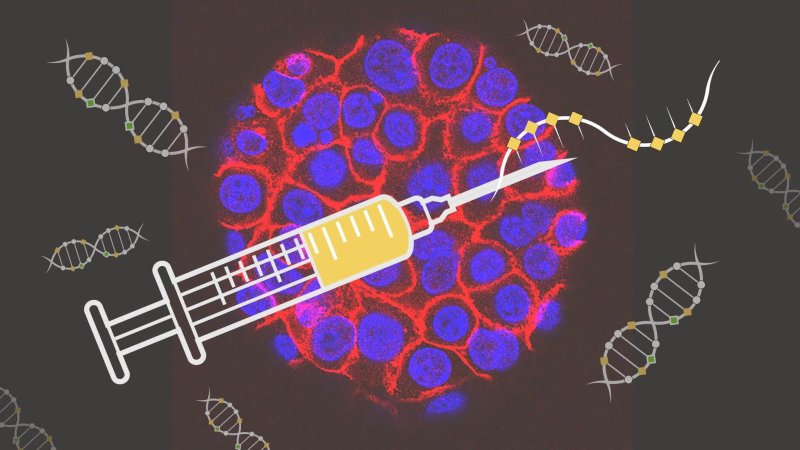There is no excuse. We saw it coming. We were amply warned. We had plans. But through the intellectual and moral bankruptcy of some of our politicians we failed to execute. And the plague came.
The Great Influenza of 1918 raged around the world for 24 months, killing as many as 100 million. The present plague has brought tsunamis of death and suffering that have washed across the planet in ongoing waves, reaping by official count at least 5 million, though probably well over twice that, with another 269 million smitten short of death. And the numbers continue to rise.
In such an annus horribilis one could be forgiven for failing to find much to celebrate. But as terrible as the year has been on so many levels, we have also seen rays of light and hope, most clearly in the advent of a powerful shield against the plague. A new technology—mRNA—delivered some of the most effective protection ever seen from a vaccine, on a timeline that shattered previous records to dust. This is no small thing. It promises to change everything.
There are flies in the ointment, of course, but the same technology that has delivered such a formidable shield against SARS-CoV-2 is even now being enlisted to save us anew against the ravages of variants spawned by our political failures. At the same time these innovations are also ushering in a new era of cancer therapeutics and vaccines for diseases that have resisted older technologies like HIV, malaria, Zika, and the specter at the annual banquet, influenza. But the revolution mRNA technology has brought to vaccine design and manufacture is a modest foreshadow of the medical revolution exploding from gene editing, which showed expanded promise in 2021. Plans have been developed to use CRISPR-mediated therapies to address Alzheimer’s disease, and clinical trials were launched to address previously intractable metabolic disorders including many we are still struggling to understand. Other researchers are using CRISPR to regenerate lost limbs. Meanwhile, these technologies are vaulting Hippocrates’ admonition that “food is medicine” past the crackpottery it has seeded for generations and actually delivering foods with enhanced and novel therapeutic benefits.
At the same time that biotechnology advances are reshaping tools for public health and medicine, we see no less momentous innovations in other fields. Almost no sector is untouched, but the greatest flowering to date has arguably been in agriculture.
The benefits to date of crops and livestock enhanced through biotechnology have been considerable, improving the economics, productivity, and sustainability of agriculture. As widely foreseen, gene editing is rapidly building on this foundation. And in lockstep with such improvements come benefits for the biggest challenge facing humanity right now, climate change.

There are myriad opportunities for gene editing and genetic engineering to ameliorate aspects of climate change. We’re figuring out how to reduce or eliminate methane from cattle, capture more carbon in crops, trees, even maritime seaweed farms. And agricultural enterprises are devising new ways to make it all economically viable.
As if all that weren’t enough to convince even the most skeptical that innovative biological technologies are essential, synthetic biology (which the National Institutes of Health defines as “redesigning organisms for useful purposes by engineering them to have new abilities”) is pushing innovation into entirely new territories, from clothing and furniture manufacturing to cruelty-free meat and leather to pollution reduction and the manufacture of jet fuel. These technologies provide new tools to address the challenges we face in a manner limited only by our imaginations.

But developing and deploying these innovations remains scientifically challenging. And while the talent and funding required are being applied, the efforts and investments face a daunting burden that is usually overlooked: government regulations. At the same time governments around the world are investing heavily in biotechnology R&D, almost without exception they impose regulatory hurdles that discriminate heavily against innovation and enforce extended reliance on obsolete and damaging products and practices.
ITIF has written extensively on these issues and offered numerous solutions but, in a nutshell, virtually none of these regulations, all ostensibly promulgated in the pursuit of safety, actually applies levels of scrutiny proportional to the hazards involved. After three decades of plantings on hundreds of millions of acres around the world with an enviable safety record, crops improved through the most precise and modern techniques are still subjected to much more searching and onerous scrutiny than new varieties developed through chaotic, random, and brutal irradiation mutagenesis, which has for decades been widely and rightly accepted as safe. This makes absolutely no sense.
The illogic is so overwhelming that even long-time opponents are re-evaluating their positions, and some are even cautiously embracing specific applications. In view of the positive results and favorable environmental and socioeconomic impacts, it is reasonable to expect this trend will continue to reshape and improve the landscape of acceptance, but this is not happening fast enough. The future is speeding toward us.
Val Giddings is a senior fellow at the Information Technology and Innovation Foundation (ITIF). Giddings received his Ph.D. in genetics and evolutionary biology from the University of Hawaii in 1980. Val can be found on Twitter @prometheusgreen
This article was originally posted at the Information Technology & Innovation Foundation and is reposted here with permission. Follow ITIF on Twitter @ITIFdc































